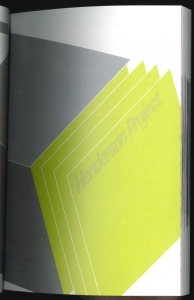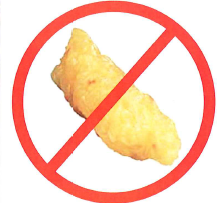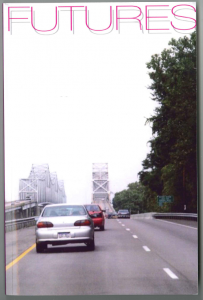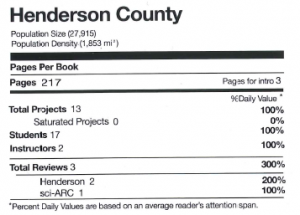Happy New Year! Problem books await.
Among its city plans and maps, today’s title suggests healthy eating and recovering from your plastic surgery in quiet Henderson, Kentucky. If only it were easier to catalog!
Our Process
It’s the beginning of the month, and time to clean off a problem shelf. Much of my library’s book cataloging is done by our Acquisitions department, with any problems going to the Cataloging & Metadata problem shelf, organized by month. A problem book sits on that shelf to cook for a while, occasionally being visited by someone in my group who will check on it and try to solve its problem: maybe it has a series issue to sort out, or a call number or record has appeared in OCLC in the meantime. I do not allow it to spend more than three months on this shelf, however: in January, I address all of the remaining books from October. Books that last that long are often problematic; not bad books, just harder to catalog, and I often learn a lot in the process of making that happen. I am still learning RDA (aren’t we all?) so I welcome discussion on my records!
Example: Futures
There is no copy in OCLC for this title, so it needs original cataloging. It likely managed to stay on the shelf for so long without any other library cataloging it because it has a local element; it was published in part by students from our College of Design, so we were one of the first to purchase it.
One thing that made this title challenging was that the metadata was somewhat unclear, or at least non-standard, on the actual piece. From the cover and spine (where most people would look to determine the title of the book), the title appears to be “FUTURES”.

RDA 2.2.2.2 says to use the title page as the preferred source for title proper, but there isn’t really a title page. The first page says only “UK DESIGN” and the next says only “SCI FI”. The next page lists members of the groups UK DESIGN and SCI FI. The page after that only says “Henderson Project”; in the absence of the cover, I would assume this was the title page. “Henderson Project” even seems like a reasonable title for the book: it is in a standard title spot, and is representative of the subject matter. It is pretty different from the title on the cover though, so I went to an external source to be sure.
The page for this title on the distributor’s website confirms that the title is “Futures”, and includes other metadata that is absent from the book, including publisher, publication date, and summary. The pages of the book do not have numbers, though the chart on the back of the book does give the same total that appears on the distributor’s website:
The description from the website was helpful in definitively summarizing the subject matter of the book, and also figuring out who SCI FI was — this is the Future Initiatives program from Southern California Institute of Architecture. What a great abbreviation!
Where do we need brackets?
With the description elements identified, there is now the task of transcribing/recording them correctly according to the RDA standard.
Under AACR2, each type of material has a specified chief source of information, such as title page for books and opening frames for videorecordings. If the preferred chief source is unavailable or unhelpful, another (such as the cover or container) may be used and specified in a note. Once the chief source is specified, if certain descriptive elements are taken from anywhere other than that source, they are bracketed in the record.
Under RDA, each element has preferred sources for that information. This is more than a change in vocabulary: different sources may be used for different elements without bracketing. The acceptable sources of information often consist of a list in order of preference, such as: 1) same source as the title proper, 2) any other part of the resource, and 3) anywhere else you can get the information (see RDA 2.4.1.2 for an example). That last option is very flexible, so it often requires brackets. In this record, the title proper is taken from the cover. The statement of responsibility is from the front matter, a different source from the cover but still part of the resource being described, so no brackets are needed.
At the same time, many other elements that would be bracketed under AACR2 are no longer bracketed under RDA. For example, page numbers in a bibliographical references note are not bracketed, even if the page you are referring to does not actually have the page number printed on it. Similarly, the number of pages in an unnumbered volume (such as the one we are describing) if recorded, is done so without brackets. The sources of information for extent (see RDA 3.4.1.2 for an example) are evidence presented by the resource itself, or by any accompanying material like a container, or by any external source (no mention of brackets even), so the chart and distributor website are both valid sources.
Given that all of these rules actively reduce the number of brackets in an RDA record vs. an AACR2 record, it felt extra weird using so many in this record. Publication and distribution information are taken from the distributor website, a source outside of the resource, so must be bracketed. Each element within the publication/distribution statements must also be bracketed, per a recent change in ISBD. I supplied United States as a location of the publisher KY.CA.CREW, figuring it was either based in Kentucky or California, maybe both.
The record
Type: a Elvl: I Srce: d Audn: _ Ctrl: _ Lang: eng
Blvl: m Form: _ Conf: 0 Biog: _ MRec: _ Ctry: xxu
Cont: ____ GPub: _ LitF: 0 Indx: 0
Desc: i Ills: ____ Fest: 0 DtSt: s Dates: 2007 , ____
040 KUK ǂb eng ǂe rda ǂc KUK
043 n-us-ky
090 HT168.H46 ǂb F88 2007
049 KUKK
245 00 Futures / ǂc UK Design, SCI FI.
246 13 Henderson project
264 1 [United States] : ǂb [KY.CA.CREW], ǂc [2007]
264 2 [Raleigh, North Carolina] : ǂb [Lulu], ǂc [2007]
300 217 pages : ǂb illustrations (chiefly color), maps ; ǂc 23 cm
336 text ǂb txt ǂ2 rdacontent
337 unmediated ǂb n ǂ2 rdamedia
338 volume ǂb nc ǂ2 rdacarrier
500 Title from cover.
500 "Students from the University of Kentucky College of Design
collaborate with students at Southern California Institute of
Architecture to explore unique development strategies in Rural
America. This case study involves Henderson, KY located on the
Ohio River."--Distributor website.
650 0 City planning ǂz Kentucky ǂz Henderson.
710 2 University of Kentucky. ǂb College of Design, ǂe sponsoring body.
710 2 Southern California Institute of Architecture, ǂe sponsoring
body.
Questions
Is your problem cataloging workflow significantly different from mine?
Is there anything you would have done differently on the record for this book?
Do these differences in sources/bracketing make tidier and more readable records? Or do they just add ambiguity?
Tumblr!
BTW check out my new Problem Cataloger Tumblr! Not much there yet, but I plan to do smaller updates there.




Great post! I am still struggling with the lack of brackets needed in RDA. It feels weird and they actually meant something (to catalogers, at least) in AACR2 records.
One question — do we still need to justify the title in RDA if not taken from the t.p.? I do out of habit, but not sure if that is actually a rule w/ RDA.
Thanks!
Pretty much, yes. RDA 2.20.2.3 says to make a note about the source of the title proper if it isn’t one of the standard places (title page, title frames, etc). The rule does have an option to omit the note if there is only one title and it appears on the resource itself, but the LC-PSS PS says that their practice is to not omit the note.
I got this question from Twitter:
Jörg Prante @xbib
@zemkat is it true? RDA does not require to record distributor metadata source URL? No link to the ebook edition?
RDA doesn’t really address this directly. We could record those links but they would just be MARC fields (or artifacts of using MARC records), not really anything that fits into the underlying RDA structure and rules.
RDA details how to identify and record elements of work, expression, manifestation and item; we usually make MARC records at the manifestation level (so containing work and expression information too). The ebook edition is a different manifestation of that expression, so should have its own MARC record; in that MARC record the URL element (RDA 4.6) would be core (for LC). The relationship between the two manifestations could be recorded in a 776; though recording that relationship is core for LC/PCC only for reproductions, and that relationship isn’t clear to me in here.
In any case, I did not catalog the ebook edition and record that relationship because a) we don’t own it so I don’t have access to it, and b) it is a downloadable PDF, so I don’t have a URL that others could easily point to, except for the URL to buy it.
I probably could have included a link to the distributor website as a service to future catalogers, but I don’t know of a rule that says it is required. Even recording the distibutor’s name in a 264 is not strictly required (it is only core if the publisher’s name is not identified) but I included it for clarity.
The practical reason that I don’t usually include links like this in my records is that I don’t like having them in my own catalog. They are hard to maintain, as they have a tendency to turn into broken links, or worse: links to other sites. We had one link that used to point to agriculture abstracts, but the site was replaced by some spammy thing selling flowers and vitamin supplements! As a policy, we usually only keep links that point directly to the resource being cataloged, or are from a trusted site like loc.gov.